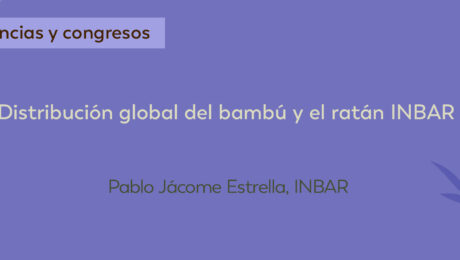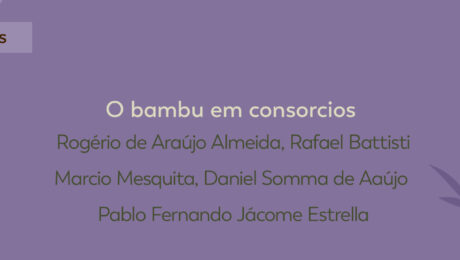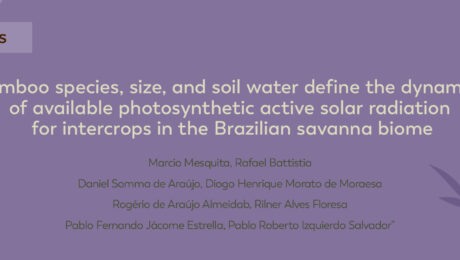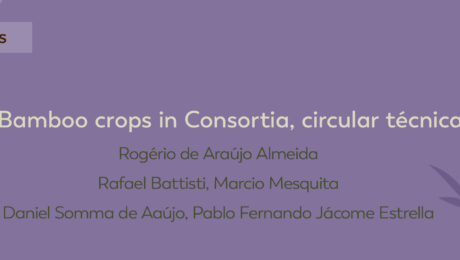Bambu em consorcios
jueves, 21 noviembre 2024
As plantas de bambu têm um enorme crescimento, o que leva ao sombreamento
do solo, e possuem um sistema radicular vigoroso e abundante. Assim, a
competição por água, luz e nutrientes limitam o desenvolvimento de outras
culturas nos bosques de bambu. No entanto, é possível cultivar outras espécies
em consórcio com bambu se houver controle sobre os fatores de competição.
Bambu em consórcios
martes, 05 noviembre 2024
Competição é a interação biológica que ocorre entre dois ou mais indivíduos, quando os recursos do
ambiente são limitados. A capacidade competitiva de uma espécie está relacionada ao uso eficiente dos
recursos onde está localizada, sendo os indivíduos mais próximos os mais vulneráveis na competição.
Bamboo species, size, and soil water define the dynamics of available photosynthetic active solar radiation for intercrops in the Brazilian savanna biome
martes, 05 noviembre 2024
Bamboo has many potential applications in agroforestry systems. This study evaluated the photosynthetic active solar radiation available (PAR) to intercrops in three bamboo species as a function of estimated soil water content in the Brazilian savanna biome (tropical savanna climate with dry winters and rainy summers). The study was conducted from 2019 to 2021 (three to five years after planting), with clumps spaced at 8 × 5 m. PAR was measured below the bamboo at 0900, 1200, and 1500 h in the central, in-row, and inter-row positions. The estimated soil water balance was used to define the water available in the soil, which was correlated with the fraction of available PAR. The lowest value for the available PAR fraction occurred at the end of the maximum soil water content, being lower than 0.20 for Dendrocalamus asper and Dendrocalamus strictus and 0.80 for Guadua angustifolia. D. asper and D. strictus showed an inverse response rate of 0.50% and 0.75%, respectively, in the change in the available PAR fraction for each percentage change in the estimated mean soil water content 60 days prior to the PAR measurement date. G. angustifolia did not show any significant effect because of the smaller
size of the culms and clump. The available PAR was correlated with estimated soil water content and species rate response. This information can be used to plan the cutting of bamboo culms to maximize the amount of PAR based on intercrop demand.
BAMBOO CROPS IN CONSORTIA
martes, 05 noviembre 2024
Bamboo plants have a huge growth that lead to shading soil in association with a vigorous and abundant root system. Thus, competition for water, light and nutrients limit the development of intercrops between bamboo groves. However, it is possible to cultivate other plant species in consortium with bamboo if there are control on the competition factors.
This would allow optimizing the use of natural resources and increasing productivity by area, combining, for example, fruit crops, bamboo shoots, and bamboo sticks. Successive harvests of different products over time would provide increase and diversification in the farmers’ income source.





